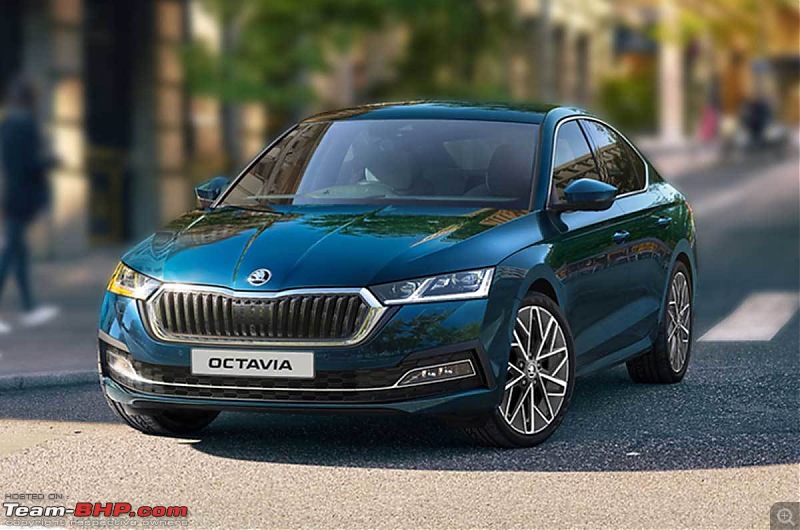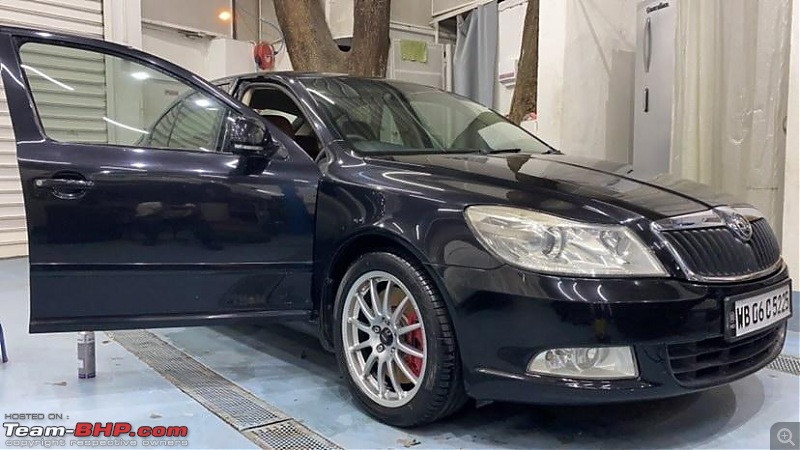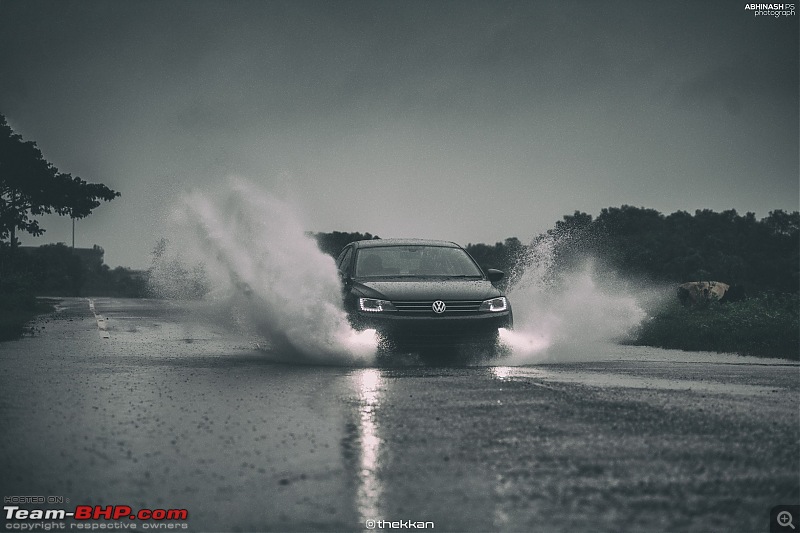| |||||||
| Search Forums |
| Advanced Search |
| Go to Page... |
 |
| Search this Thread |  30,486 views |
| | #1 |
| Distinguished - BHPian  | A technical overview | VW Jetta and Skoda Laura 2021. The “kalyug” for sedan lovers has set in. The Koreans and the Japs have either called it quits or are surviving on the morseled remains left behind after the pseudo SUVs and compact crossovers have taken over. The situation is bleak. You walk into a Skoda showroom. The new 4th gen Octavia has wowed you, but the Home Ministry gives you a rather disappointing glance when the finances are being discussed. That well-built, low slung, globally revered D-segment sedan you always dreamt of is out of reach again. Or is it? The D-segment sedan has died a rather brutal death at the hands of cars that in my opinion aren’t even worthy of being called SUVs. The XUV 500 stole the limelight in 2011, and it has been one disappointment after another for sedans. Today, SUVs (that’s what the average Indian calls them not me) of all forms have gained aspirational value and are the go to option for any Indian spending over a million bucks (even below in all honesty). Sitting high up above the ground, towering over everyone, bullying traffic and taking potholes with aplomb seems to have gained precedence over carving corners and enjoying long sweepers at triple digit speeds in a low-slung sedan. Why am I even telling you all this? The reason is simple. If you want a fun to drive sedan around the 25L mark today, you can’t have one. What if I however told you, that there are a bunch of underrated yesteryear D1 Segment sedans up for grabs at tempting prices? And the fact that they even get things to the table which a modern-day D-segment sedan on sale can’t? Don’t be tempted just yet. I am not going to throw classifieds at you and ask you to buy cars straight off. I am going to document all the issues the car I am listing down is bound to face and only then allow you to reach your conclusion. With all formalities done, here’s a deep dive into 2 famous fun-to-drive D-segment sedans money can buy and their pros, cons along with gremlins. Last edited by vishy76 : 7th June 2021 at 23:49. |
| |  (69)
Thanks (69)
Thanks
 |
| The following 69 BHPians Thank vishy76 for this useful post: | Aditya, AKSarkar1, AShubrah, Autocaptive, Behemoth, bhavik.1991, Bibendum90949, Big Smoke, BlackPearl, br_, CarguyNish, CEF_Beasts, Col Mehta, dailydriver, deep_behera, denny_ace, Dr.AD, DrANTO, fluidicjoy, Gamerk, Gannu_1, GTO, HMV, iliketurtles, InControl, jonesanto, Karthik R, KK_HakunaMatata, lemedico, lovetorque, Maedhros, manjubp, Maverick_x1, MoTo_meister, nitinkbhaskar, noopster, paragsachania, Prakritij, PrasunBannerjee, praveen789, Rambo-RS, RBhargav, rednikhil, Researcher, rj22, romil.shroff, r_subbiah, saisailendra, shancz, smuniswami, suhaas307, SuhairZain, sunikkat, SUPERSPORT, Surprise, Swarup5, swiftnfurious, Taha Mir, Tgo, The Rationalist, The_Outsider!, TSIVTEC, tweaker, Vasanth, VeluM, vigsom, vredesbyrd, WhiteKnight, yogiii |
| |
| | #2 |
| Distinguished - BHPian  | Skoda Laura Skoda Laura What you will like:
What you wonít like:
Last edited by vishy76 : 7th June 2021 at 16:32. |
| |  (46)
Thanks (46)
Thanks
 |
| The following 46 BHPians Thank vishy76 for this useful post: | Aditya, AKSarkar1, Autocaptive, bhavik.1991, Bibendum90949, CarguyNish, CEF_Beasts, Col Mehta, dailydriver, deep_behera, Dr.AD, DrANTO, fluidicjoy, Gannu_1, GaryTSI, GTO, g_sanjib, HMV, InControl, lemedico, lovetorque, Maedhros, manjubp, Mr.Boss, nitinkbhaskar, noopster, paragsachania, Researcher, rj22, sgm, shancz, suhaas307, SuhairZain, SUPERSPORT, Surprise, swiftnfurious, Taha Mir, The_Outsider!, tweaker, varoon9999, Varun_HexaGuy, VeluM, vigsom, viXit, vredesbyrd, yogiii |
| | #3 |
| Distinguished - BHPian  | Volkswagen Jetta Volkswagen Jetta What you will like:
What you won’t like:
Last edited by Aditya : 8th June 2021 at 19:47. Reason: As requested |
| |  (44)
Thanks (44)
Thanks
 |
| The following 44 BHPians Thank vishy76 for this useful post: | Aditya, Autocaptive, bhavik.1991, Bibendum90949, BlackPearl, CarguyNish, CEF_Beasts, dailydriver, deep_behera, Dr.AD, DrANTO, Gannu_1, GaryTSI, GTO, g_sanjib, HMV, iliketurtles, InControl, lemedico, lovetorque, Maedhros, Mr.Boss, nitinkbhaskar, nitninja, paragsachania, Rambo-RS, Researcher, rkv_2401, S.A.N., saisailendra, sgm, shancz, smuniswami, SS-Traveller, suhaas307, SuhairZain, SUPERSPORT, swiftnfurious, The Rationalist, tweaker, VeluM, vigsom, vredesbyrd, VWAllstar |
| | #4 |
| Distinguished - BHPian  | 1.8 Tsi Model Years and Variants My personal suggestion to anyone who is looking for a used Laura is to find a post 2009 car (the facelift basically). 2010 also saw the Laura come with the 2.0 CRTDI engine and the PD being axed. The manual got a 110hp tune (with a turbo codenamed CR110) and a 140hp tune for the 6-speed DQ250 DSG (CR140 turbo). Total tranny options with their codenames are as follows: - 1.9 PD TDI + 5-speed manual (BXE) - 1.9PD TDI + 6-speed DSG (BXE) - 2.0 CR TDI + 5-speed manual (CLCA) - 2.0 CR TDI + 6-speed DSG (CLCB) - 1.8 TSI + 6-speed manual (CDA) - 1.8 TSI + 7-speed DSG (CDA) The most reliable combination of the lot is undoubtedly the 1.9PD paired with the 5-speed manual. The PD uses a humble SOHC setup and produces an adequate 105ps and 250nm of torque. Power figures might not be as much as her modern cousins, but she’s a virtually bulletproof engine with very less going wrong on the mechanical side of things. The Jetta on the other hand gets it a lot simpler. It comes with a total of just 3 tranny options. - 2.0 TDI + 6-speed manual (CLCB) - 2.0 TDI + 6-speed DSG (CLCB) - 1.4 TSI + 6-speed manual (CMBA) Again, if a used Jetta is on your radar, make sure it’s a 2014 at least if not a 2015 car. 2015 cars are not only younger but also came with more goodies including cruise control as standard. Later cars also got an MIB-II music system with apple carplay and android auto. Things that can go wrong 1.8 TSI (CDA) (Laura) 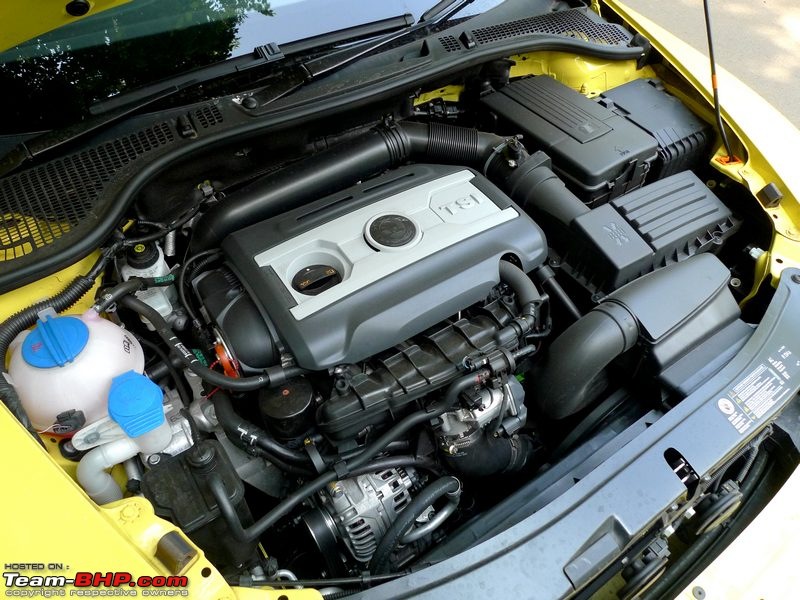 (Failures) Timing Chain tensioner failure The timing chain on earlier iterations of the 1.8 TSI (before 2012) were prone to slacking or snapping off due to faulty tensioner design. Skoda did fix this under recall (although I am assuming it was a very silent one) with a newer design. The easiest way is to check your car’s service history or do a physical inspection by opening the timing chain cover and having a look at the tensioner physically. If the tensioner has a silver ring around its neck, it’s the older design as indicated in the image below: 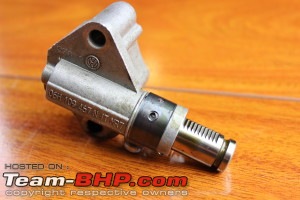 This is how the newer updated design looks besides the older one:  A broken or slacking chain can put your engine out of time. If you are extremely lucky, the worst you will see is a car that starts, hesitates to run, and shuts off immediately. If you aren’t however, the result is going to be a holy mating ritual between your pistons and valves, eventually warranting an engine head rebuild. Needless to say, this is a mistake you would want to avoid. Additionally, it is advisable to check the chain for slack every 90-100K km, though VW optimistically claims it is sealed for life. Piston Ring issues The piston rings on the 2nd gen 1.8 TSI engines are known to wear out early and leak compression along with contributing to excessive engine oil consumption (though this can also be due to a faulty PCV valve). The only solution is to change to a better design. Its unbelievable how the Germans can engineer the most complex of things well enough, but screw up when it comes to something as basic as piston ring design. A shot of the newer and older rings side by side. The small holes you see on the oil scraper ring don’t allow oil to drain away fast enough and choke leading to excessive consumption:  The newer redesigned rings have it fixed. The shell shaped orifices allow oil to drain away easily into the bore and thus solve the issue: 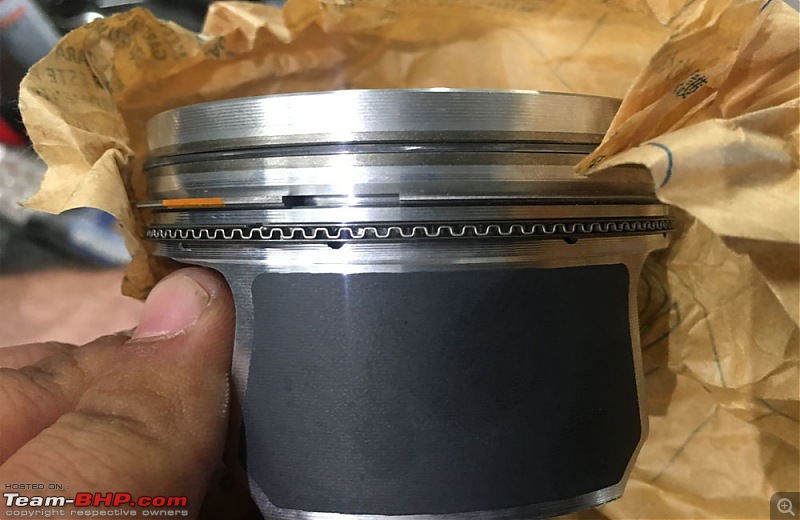 Water Pump failures Comparatively rare when pitted against TDIs, but water pump failures do occur on the 1.8 TSIs as well. The good news is the pump isn’t driven by the timing belt like the TDIs, so there is no chance of corrosive coolant dripping onto the belt and damaging it. The bad news is, getting to the pump is a lot harder and its an expensive fix as compared to the TDI. In most cases, the internal seals of the pump give way and spring up leaks A pic of the pump. It is driven by a separate belt on the right-hand side of the engine on TSIs:  Evap Canister issue The evap canister (also known as the N80 valve) is another known gremlin on the 1.8 TSI though it’s relatively cheap to fix. The canister is responsible for trapping petrol vapours in the system and preventing them from venting out directly into the atmosphere. A bad canister usually triggers a CEL on the TSIs. Its not very expensive to fix if done at an FNG:  High Pressure Fuel Pump The high pressure pump on the TFSIs is driven directly via a lobe on the camshaft unlike the TDI where it connects to the timing belt via a pulley. The piston in the HPFP is sometimes known to jam and go bad. Eventually, it can't generate enough pressure and the car might end up not starting at all. A low fuel rail pressure error code is usually thrown up during a scan 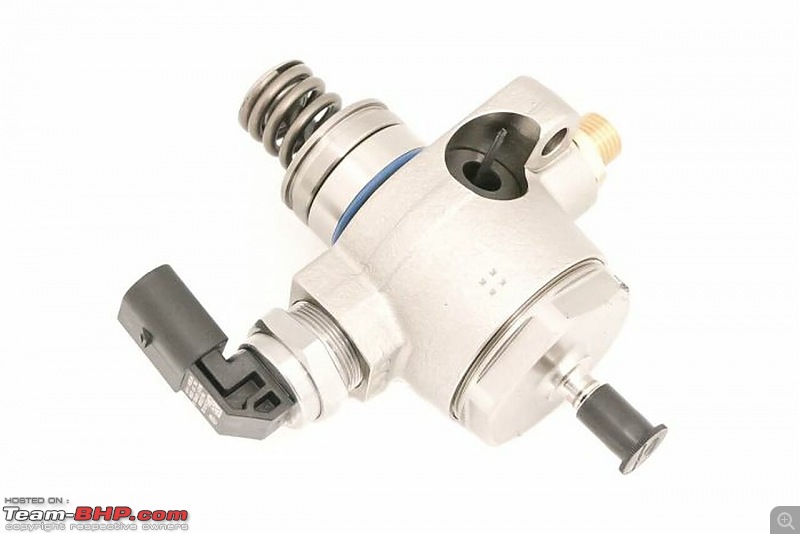 (Advisories) Tackling oil consumption issues can be tricky. The first order of business is to ensure a perfectly functional PCV valve and a turbocharger (miniscule chances of the turbo going bad considering they are liquid cooled using an auxillary circuit). If the PCV valve is found to be in good shape, a compression test is advisable post which further course of action may be decided. DQ200 DSG Gearbox I don't think I need to elaborate much on the gremlins of this gearbox. From mechatronics failures, to clutch pack and flywheel wearouts, this gearbox is known for it all. Earlier iterations of the 200 used on the Laura were even more problematic than the later ones. Additionally, even the earlier DQ250s (around 2010) were known for going bad (used to be the mechatronics chiefly). 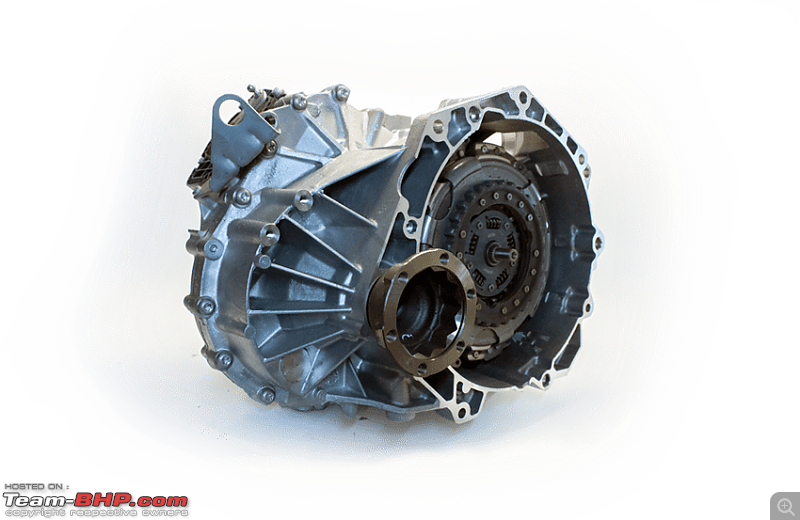 Last edited by vishy76 : 7th June 2021 at 23:50. |
| |  (49)
Thanks (49)
Thanks
 |
| The following 49 BHPians Thank vishy76 for this useful post: | Aditya, AYP, Bibendum90949, CarguyNish, CEF_Beasts, dailydriver, DicKy, Dr.AD, DrANTO, drift87, fluidicjoy, Gannu_1, GaryTSI, graaja, GTO, g_sanjib, HMV, InControl, jeygani, jithin23, lemedico, lovetorque, Maedhros, manjubp, MoTo_meister, Mr.Boss, nitinkbhaskar, paragsachania, pkulkarni.2106, Prakritij, rahulsenapati, Rambo-RS, Researcher, saisailendra, shancz, SILVER-ARROW, srgntpepper, SS-Traveller, suhaas307, SUPERSPORT, Surprise, Taha Mir, The Rationalist, The_Outsider!, tweaker, varoon9999, VeluM, vigsom, vredesbyrd |
| | #5 |
| Distinguished - BHPian  | 2.0 Tdi 2.0 TDI (5-speed manual/6-speed manual/6-speed DSG) (CLCA/CLCB) (Jetta/Laura)  The warhorse of the VAG lineup. The 2.0 TDI is probably one of the most popular 4-cylinder diesels in India. Mechanically, sheís an upsized sibling to the 1.2, 1.5 and 1.6 TDIs seen in lesser Volkswagens. Unlike the PD, the 2.0 TDI switches to a more contemporary DOHC setup enabling her to breathe easier at higher RPMs. She also sounds slightly less clattery. Two variants of the TDI made it into the Laura. The 110hp/250nm CLCA with a turbo codenamed CR110 and a 138hp/320nm CLCB with a turbo codenamed CR140. The CLCA was used on the 5-speed manuals while the CLCB was exclusive to the 6-speed DSG on the Laura. The CLCA also eventually went into the hood of the Yeti 4x2 (4x4 again got CLCB). The Jetta got the 138hp treatment (CLCB) as standard. (Failures) Water Pump issues The 2.0 TDI is synonymous with water pump gremlins irrespective of the iteration. The internal seals of the pump eventually give up. Since the pump is a part of the timing kit, it leaks corrosive coolant onto the belt and causes damage. If not diagnosed on time, results can be catastrophic. VW did change the water pump design slightly from around 2015, so newly designed VAGs and Laura which have had it replaced post 2015 are spared. Pic of the old pump which came out of my 2014 2.0 TDI Jetta. Lots of corrosion around the weep hole area indicating coolant did eventually make its way out through here:  The water pump that came out in 2021 (replaced as a precaution). You can see a slight change in design here. There is an additional structure covering the weep hole. Failure rates have been lowered and I do know of a few Jettas (all 2015+) at 80K+ km without any water pump issues: 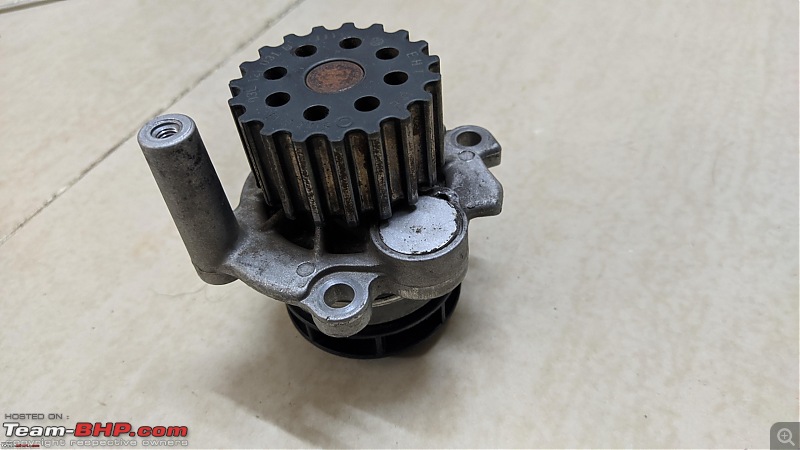 Flywheel The 6-speed DQ250 DSG also uses a flywheel (though its functions are not the same as in the manual). The DMF used is known to wear out early. Symptoms include loud banging noises from the left-hand side of the car (front left wheel on the gearbox side) and vibrations. An LUK branded flywheel can be put in at an FNG for less than half the cost that VW/Skoda charges. The flywheel is also supplied with a bearing and all the bolts that should hold it in place (one time use bolts). Flywheel comes in at around 28-35K for the DQ250 DSG depending on where you source it from:  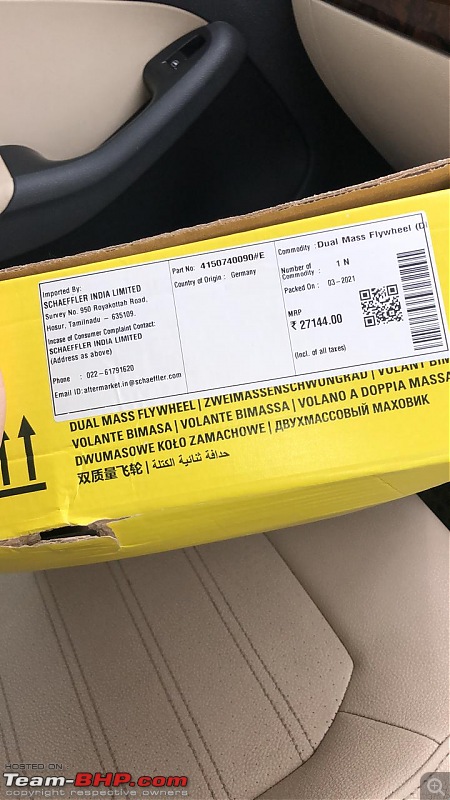 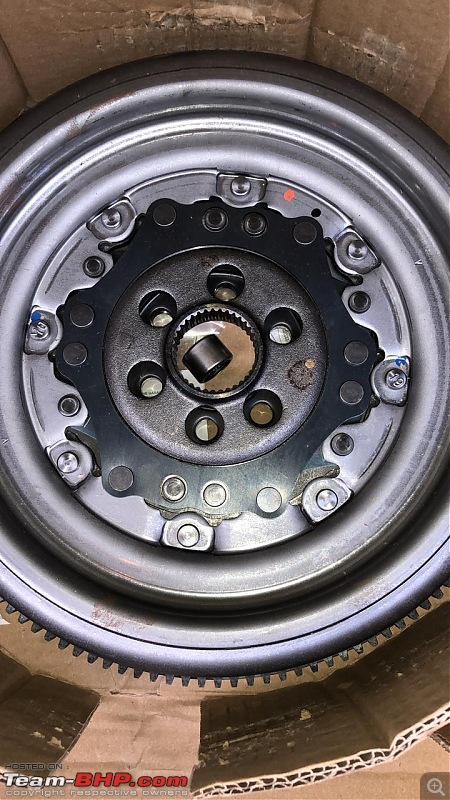 (Advisories) There is lots of ambiguity on when the timing kit should be replaced on these. Some say its 1.2L km, others say itís around 1.05L km and the likes. My personal opinion is to keep a very close eye on the kit post the 75-80K km or the 6-year mark. There have been cases of belts snapping off on TDIs at around 95-100K km as well. Hereís an Octavia TDI with its timing belt broken and the engine head requiring a rebuild at 1.05L km: 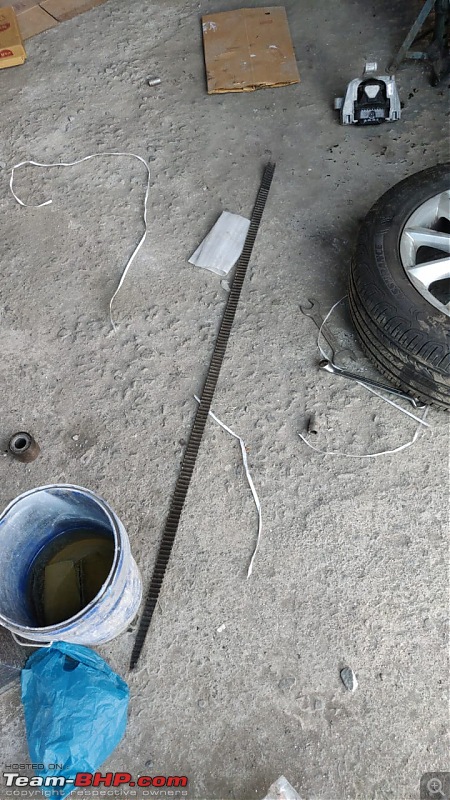 I also strongly advocate replacing the water pump on these. Hardly costs anything (2.5-3K) and ensures one doesnít need to touch a thing on the timing kit front for the next 80-90K km. Isolated cases of oil cooler failures also exist. Symptoms will include a drop in oil levels and sludge formation in the coolant reservoir. A change of the entire assembly is advisable along with complete flushing of the coolant system. Good news is, the oil cooler on the 2.0 TDI is shared with the 1.5 and 1.6 TDIs. A localized part should be easy to source: 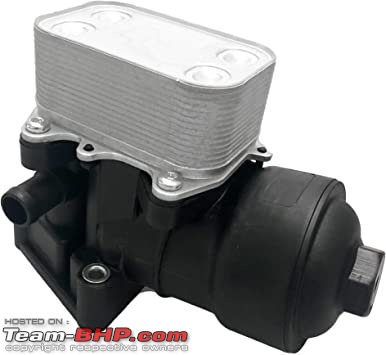 ECU failures can arise due to clogged windshield cowlings. Make sure the area is free of any dust and debris so that the water can pass through easily and doesnít end up accumulating and falling on top of the ECM. 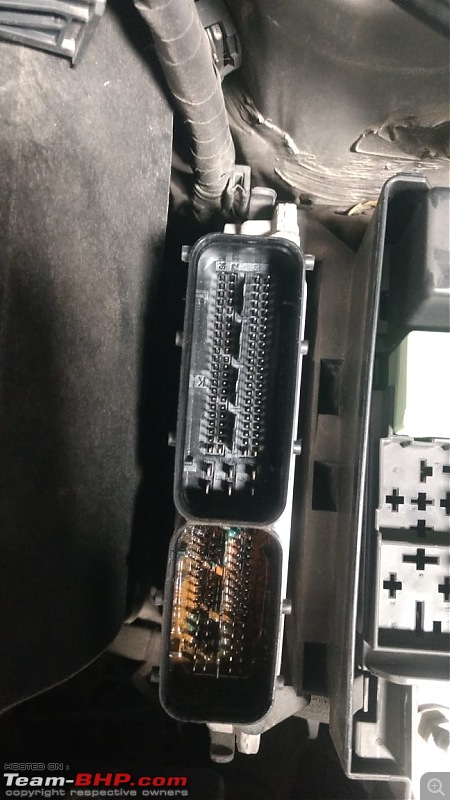 The gearshifter linkages are known to go weak on MK6 cars. Sometimes a bit too early. Initial symptoms are notchy gearshifts followed by lot of free play in the gear lever. The selector cable eventually snaps leaving the gearbox stuck in 3rd gear. 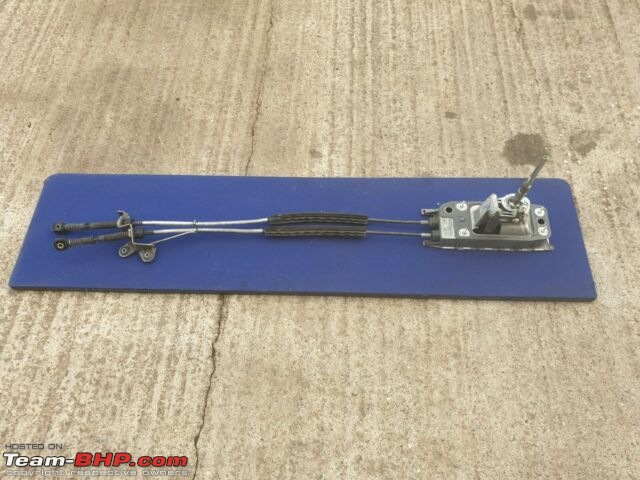 A very peculiar issue that occurs on certain TDIs is the presence of resonance around the 1500-2000rpm mark. It has been traced down to the air intake plumbing coming loose and rattling. Here's a YT video and corresponding images indicating the fix: 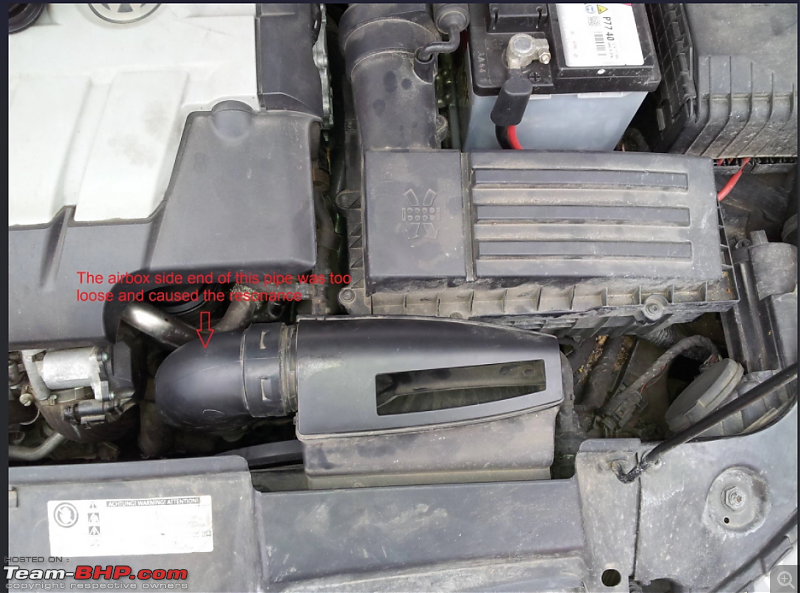   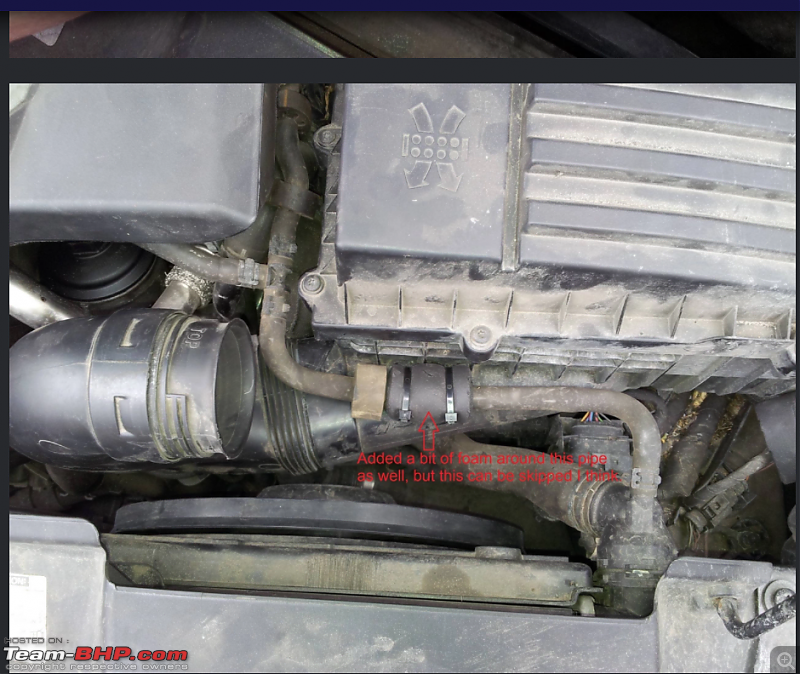 Last edited by vishy76 : 7th June 2021 at 23:46. |
| |  (44)
Thanks (44)
Thanks
 |
| The following 44 BHPians Thank vishy76 for this useful post: | --gKrish--, Aditya, AYP, Bibendum90949, CarguyNish, CEF_Beasts, dailydriver, DicKy, Dr.AD, DrANTO, drift87, fluidicjoy, Gannu_1, GaryTSI, graaja, GTO, g_sanjib, HMV, InControl, jeygani, jsrakkar, lemedico, lovetorque, manjubp, Mr.Boss, nitinkbhaskar, paragsachania, rahulsenapati, Rambo-RS, Researcher, saisailendra, shancz, Shreyas, SILVER-ARROW, SUPERSPORT, swiftnfurious, Taha Mir, The Rationalist, The_Outsider!, tweaker, VeluM, vigsom, vredesbyrd, yogiii |
| | #6 |
| Distinguished - BHPian  | Wear & Tear Suspension Average replacement cost for the suspension is slightly on the higher side owing to the presence of a multilink suspension at the back. I have compiled a list of parts that you would want to look into and replace if necessary: Front - Lower control arm bushes - Dampers along with strut bearings - Link rods - Sway Bar links - Subframe bushes - Tie rod ends - Ball joints Rear - Control arm bushes - Dampers along with bump stops (if worn) - Sway Bar links Preffered brand for the dampers is Sachs while the control arm bushes can be sourced from Febi, Myle or Lemferder. Another area that needs looking into along with the suspension are the mounts. For the 2.0 TDI (and even the TSI), there are 3 mounts that hold the engine in place: - Bed Mount: The mount that sits on the timing kit side and the only one that has a hydraulic chamber as well to absorb a majority of the vibrations. - Dogbone mount: Called so due to its shape. Prevents rocking of the engine along the length of the car and connects the gearbox to the subframe - Pendulum mount: Again, called so due to its shape. Connects the gearbox to the chassis on the right-hand side (side opposite to the timing kit) Febi-Bilstein and ZF Lemferder are two well known OEMs that supply mounts. Clutch and flywheel replacement (Manual GBs) The clutch and flywheel on both the 6 and 5-speed MTs use a DMF or Dual Mass flywheel. As the name suggests, a DMF has two distinct masses connected by springs in between. It does a better job of dampening vibrations and shift shock as compared to an SMF in theory. Unfortunately, a disadvantage of DMFs is that they fail quite early. A failed manual DMF will make the same noises as a failed DSG DMF (described above). Another disadvantage is that DMFs cost a bomb to replace as compared to SMFs. I have heard of people chucking the DMFs out and putting SMFs and here’s my take on it: For: - Much cheaper replacement costs - Better clutch feel and feedback - Lasts a lot longer than a DMF Against: - Shift shocks might not be dampened as well as a DMF - More importantly, several VAG forums claim VW started using weaker synchronizer rings (made of steel as opposed to brass) on the later GBs, making DMFs a compulsion. Without the additional damping of a DMF, gearboxes were alleged to blow synchros prematurely Here’s a link to one such discussion: https://forums.tdiclub.com/index.php...or-smf.452408/ A well-known brand that does supply clutch kits and DMFs is LUK. VW uses Sachs which costs twice as much. I again went through several forums and concluded that there’s absolutely no difference between them. In fact, many forums also state that Sachs clutch kits are supplied with LUK flywheels and vice versa depending on stock availability. A clutch kit should ideally include the following: - Release bearing - Friction plate - Pressure plate - Slave cylinder Last edited by vishy76 : 7th June 2021 at 02:07. |
| |  (38)
Thanks (38)
Thanks
 |
| The following 38 BHPians Thank vishy76 for this useful post: | Aditya, AYP, Bibendum90949, CarguyNish, CEF_Beasts, dailydriver, Dr.AD, DrANTO, drift87, fluidicjoy, Gannu_1, GaryTSI, graaja, GTO, g_sanjib, HMV, InControl, jeygani, lovetorque, manjubp, Mr.Boss, nitinkbhaskar, paragsachania, Rambo-RS, Researcher, scorpio2107, shancz, spd_tkt, suhaas307, Surprise, swiftnfurious, Taha Mir, The_Outsider!, tweaker, VeluM, vigsom, yesyeswe, yogiii |
| | #7 |
| Distinguished - BHPian  | Compressor and Air con issues Air con issues and German cars go hand in hand. Compressor failures and cooling coil issues are not very uncommon on these. There are several issues that can occur, some relatively cheap to fix but very difficult to figure out, others very easy to diagnose but quite expensive to set right. Starting with the cheapest suspect: Compressor Solenoid Valve Most compressors have an electromagnetically actuated clutch which engages and disengages with inputs from the ECM. The Jetta uses a solenoid actuated clutch. A solenoid valve sits atop the compressor and receives inputs from the ECM. The solenoid varies load on the compressor (which remains on all the time). Common symptoms of valve failure include no or intermittent cooling and high suction pressures. VW doesnít supply the valve separately. Sanden however (The company which manufactures the entire compressor) does. The valve costs about 4.5-5K. A change of compressor oil is also recommended with a valve change.  Compressor Replacement Many times, however, the entire compressor goes kaput. Sourcing a new compressor is the only option in such a case. A brand-new Sanden make compressor comes in at around 22K. A precaution to take while changing the compressor is to make sure there is absolutely no debris left behind after the previous one failed. If this occurs, the new compressor will also shred itself to bits. Thus, it is also advisable to change the condenser unit. Generic things to ensure while getting an air-con overhaul done on these cars: - Ensure vaccum is pulled in the system using a strong suction pump for a good 30-40 minutes. If moisture remains within the system, it will eventually rot the cooling coil out and lead to more trouble - Compressor oil and refrigerant quantity is listed on a sticker underneath the bonnet. Do not overfill the compressor - OE make for the compressor is Sanden, Japan  A member of the VW Jetta owners group on whatsapp managed to source this locally made condenser for around 5K. A very negligible amount to avoid further mishaps as compared to the 22K a new compressor is anyways demanding: 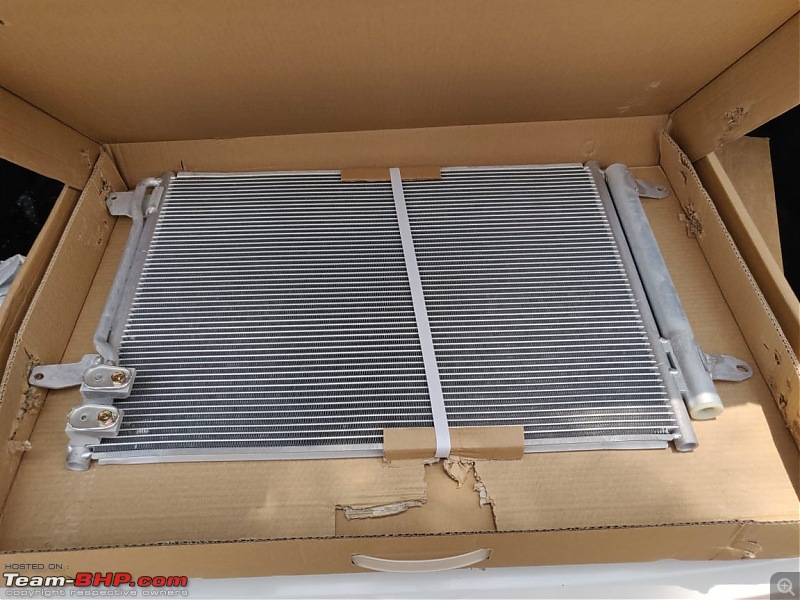 The sticker under the bonnet which specifies refrigerant quantity: 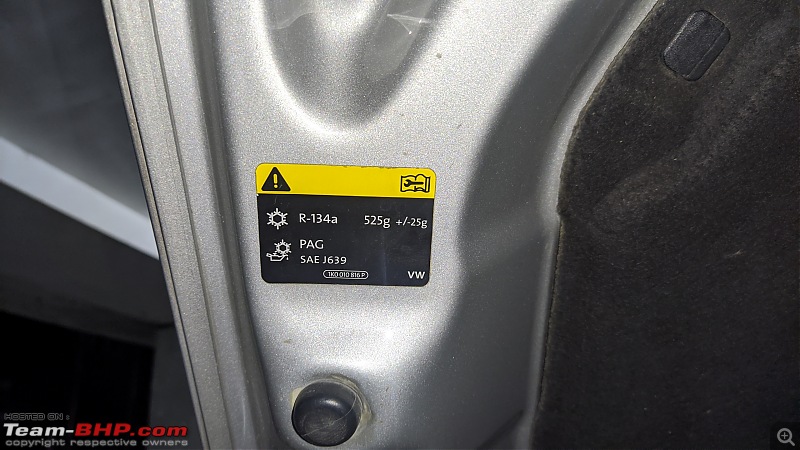 Last edited by vishy76 : 7th June 2021 at 23:35. |
| |  (30)
Thanks (30)
Thanks
 |
| The following 30 BHPians Thank vishy76 for this useful post: | Aditya, Bibendum90949, CarguyNish, CEF_Beasts, Dr.AD, DrANTO, drift87, Gannu_1, GaryTSI, graaja, GTO, g_sanjib, HMV, InControl, jeygani, lovetorque, manjubp, Mr.Boss, paragsachania, Rambo-RS, Researcher, suhaas307, Surprise, swiftnfurious, The_Outsider!, tweaker, VeluM, vigsom, yesyeswe, yogiii |
| | #8 |
| Distinguished - BHPian  | EGR Issues EGR Issues (2.0 TDI) This wasn’t commonly a failure point on 2.0 TDIs, unlike the early 1.6 TDIs. However, of late, 2.0 TDIs have also been reporting choked and failing EGR solenoids post dieselgate fix. VW will hand you over an 80-90K bill (they don’t believe in cleaning EGRs apparently). An EGR failure or a choked EGR will usually see the car go into limp mode and a CEL along with a (blinking) glow plug light on the dash. If the EGR motor isn’t damaged, it can simply be cleaned and put back together. If it is, the EGR will need replacing. Even if the EGR cooler is leaking, replacement is the only option. Here’s a list of things that need cleaning: - EGR valve itself - EGR Cooler - Return pipe - Intake Manifold - Throttle Body (Anti-shudder valve in VAG speak) Getting to the EGR is quite a task. The entire assembly sits below the turbocharger on the 2.0 TDIs and can be a pain to get to and remove. Once removed, it is advisable to keep the rubber seals and gaskets separate and clean the rest of the components using kerosene, petrol or carb cleaner. EGR Cooler. The orifices you see are what the hot exhaust gases pass through. Coolant circulates around them and cools them down, before they are eventually routed into the intake manifold: 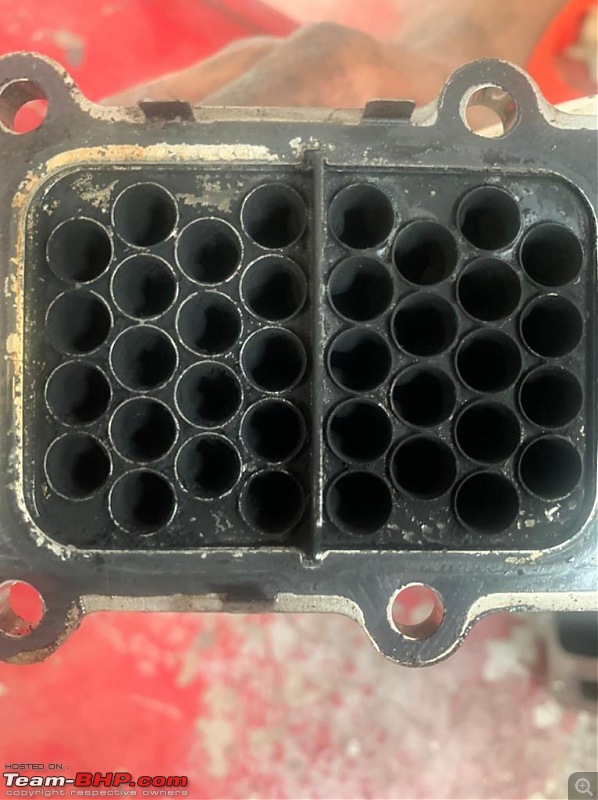 EGR Valve Assembly:  A well made video on how to go about cleaning the intake manifold on TDIs and dismantling the anti-shudder valve: Last edited by vishy76 : 7th June 2021 at 23:31. |
| |  (33)
Thanks (33)
Thanks
 |
| The following 33 BHPians Thank vishy76 for this useful post: | Aditya, Bibendum90949, CarguyNish, CEF_Beasts, dailydriver, Dr.AD, DrANTO, fluidicjoy, Gamerk, Gannu_1, GaryTSI, graaja, GTO, HMV, InControl, jeygani, lovetorque, manjubp, Mr.Boss, nitinkbhaskar, paragsachania, rahulsenapati, Rambo-RS, Researcher, shancz, suhaas307, Taha Mir, The_Outsider!, tweaker, vigsom, vredesbyrd, yesyeswe, yogiii |
| | #9 |
| Distinguished - BHPian  | Timing Belt and Kit Timing Kit (2.0 TDI) A lot of owners do have a few doubts with pertains to kit replacement. I have outlined why it should be replaced a bit earlier than usual, but I will list down parts here for the kit. The most important part of the kit (and the most expensive one) is this tensioner bearing. As the belt ages and expands, the tensioner is responsible for maintaining perfect slack in the belt:  The two roller bearings. The smoother part of the belt rides on these and the tensioner: 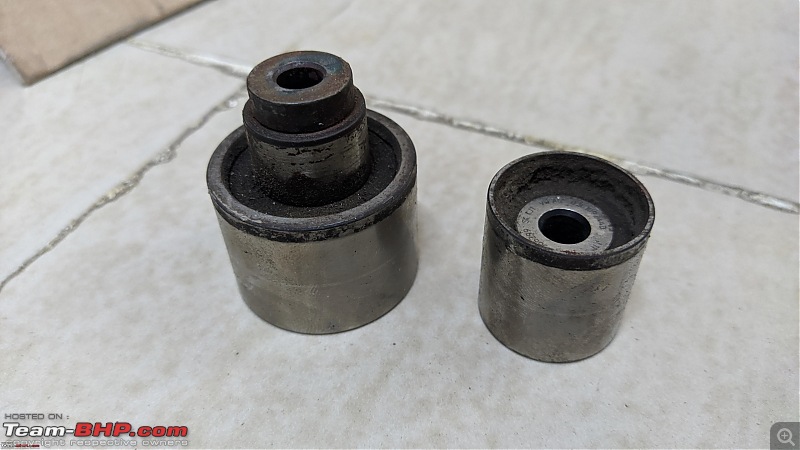 The idler pulley. Again, the smoother part of the belt sits on this: 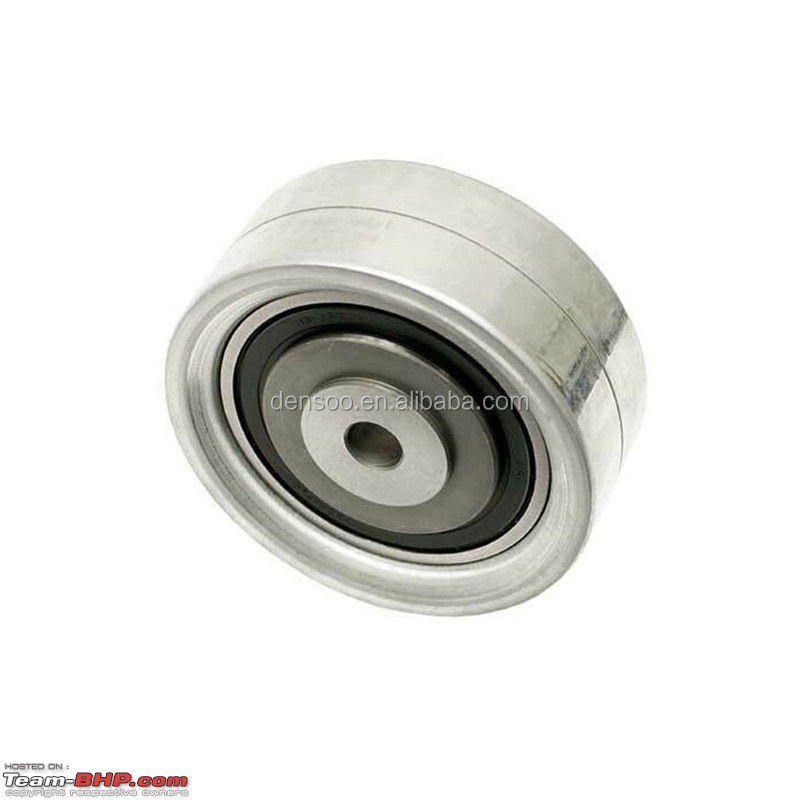 The belt itself. The water pump is not included in the timing kit (by VW or any aftermarket vendor):  The belt connects the following components together: - Crankshaft pulley (timed) - Camshaft pulley (timed) - High pressure fuel pump pulley (timed) - Water Pump (untimed) The “timed” components need to be locked before the old belt is taken out. The engine is hand rotated to TDC or top dead centre. Special tools supplied by VAG are used to easily lock the crank, cam and HPFP pulleys. Once this is done, the tensioner is loosened to remove slack and the old belt is removed. The reassembly is the complete opposite. At the end of this process, the engine is first hand rotated twice and brought back to TDC. The timing tools are inserted again and it is ensured that the engine is perfectly in time. A pic of the entire timing belt system on a 2.0 TDI. Second image shows the special tools used to lock pulleys here. Allen keys can also be used in place of these:   INA Schaeffler seems to be the go-to make for FNGs. The kits are priced reasonably at VW as well (again, thanks to the fact that they are shared with the 1.2, 1.5 and 1.6 TDIs). 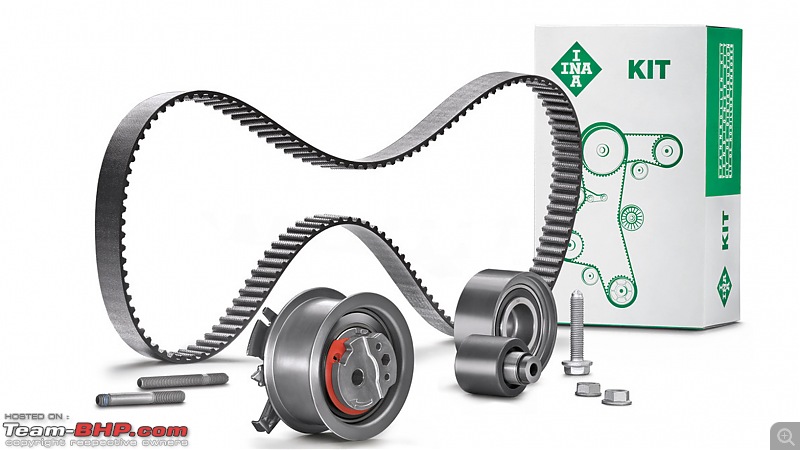 Last edited by vishy76 : 8th June 2021 at 03:04. |
| |  (34)
Thanks (34)
Thanks
 |
| The following 34 BHPians Thank vishy76 for this useful post: | Aditya, AYP, Bibendum90949, CarguyNish, CEF_Beasts, dailydriver, Dr.AD, DrANTO, drift87, fluidicjoy, Gannu_1, GaryTSI, graaja, GTO, HMV, InControl, manjubp, Mr.Boss, nitinkbhaskar, paragsachania, Prakritij, rahulsenapati, Rambo-RS, Researcher, suhaas307, SUPERSPORT, Surprise, Taha Mir, The_Outsider!, tweaker, varoon9999, vigsom, yesyeswe, yogiii |
| | #10 |
| Distinguished - BHPian  | Electronic and miscellaneous niggles Some electronic and Miscellanous niggles include the following: Isolated cases of ABS module failures do exist on 2nd Gen Octavias and many Mk6 Jettas. The only thing one can do is change the brake fluid on time and keep fingers crossed. The usual culprit is an electric short in the module itself or a failure of the yaw sensor inside the module. An ESP light will come on the instrument cluster accompanied by ABS, PS lights and TC errors. Finding a used or overhauled one (on Ebay) is the only way out since VW will bill you 1.7+L for a new one. Coding it is also a bit of a task so make sure you find a capable FNG 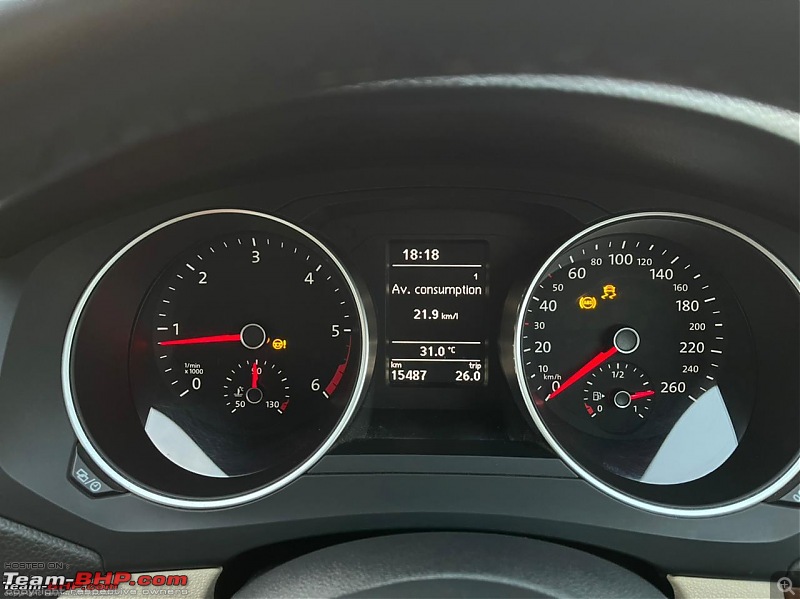 Wheel speed sensors do go bad especially if the car is subjected to humid climates and driven through a lot of water. Replacing them is cheap enough thankfully (anywhere between 1.5-3K if sourced from FNGs). Failing ABS sensors and ABS modules portray the same initial symptoms. Make sure you do a thorough scan to ascertain what the case is exactly, especially for a pre-owned car 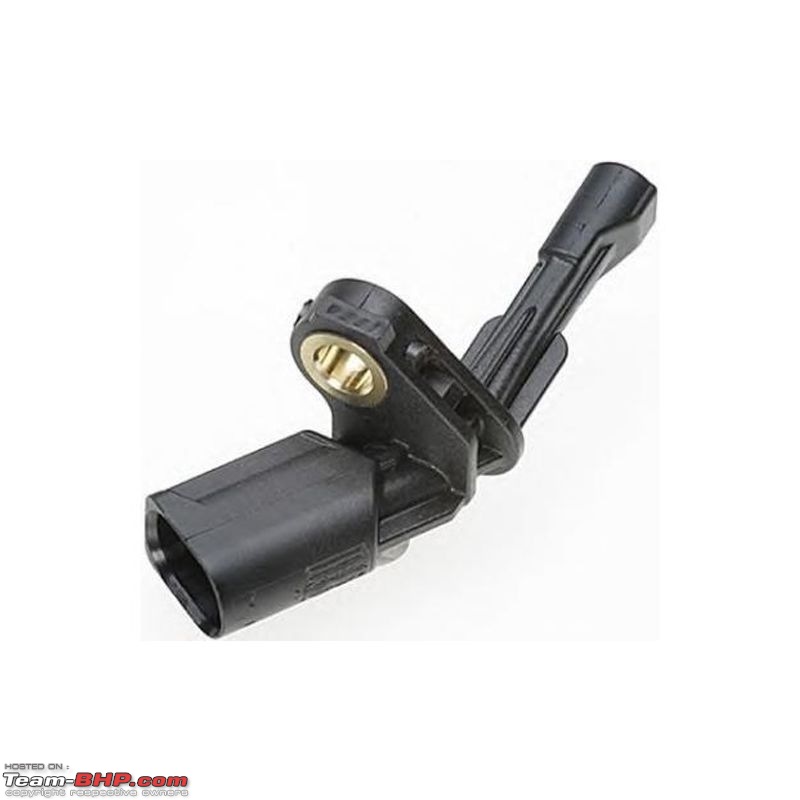 The bi-xenon headlamp bulbs tend to go weak after about 3-4 years of use. Only option is to upgrade to brand new bulbs  Instrument cluster backlighting on some of the Lauras is known to be a bit wonky and can flicker or go bad completely. New LEDs can be soldered but the cluster will have to be dismantled carefully  Headliner upholstery is known to sag with age. Indian summers mean the glue holding the cloth goes weak and the entire backing of the cloth also decays. Dismantling and redoing the cloth can cost anywhere between 7 to 11K and should be done carefully 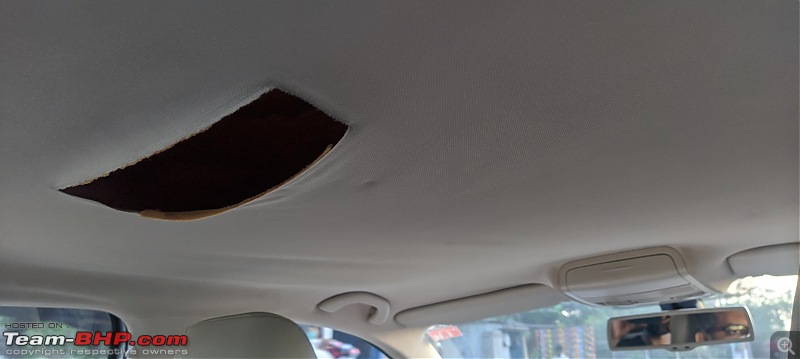 Last edited by vishy76 : 7th June 2021 at 22:56. |
| |  (34)
Thanks (34)
Thanks
 |
| The following 34 BHPians Thank vishy76 for this useful post: | Aditya, AYP, bhavik.1991, Bibendum90949, CarguyNish, CEF_Beasts, dailydriver, Dr.AD, DrANTO, drift87, fluidicjoy, Gannu_1, GaryTSI, graaja, GTO, HMV, InControl, manjubp, Mr.Boss, nitinkbhaskar, paragsachania, rahulsenapati, Rambo-RS, Researcher, saisailendra, shancz, smuniswami, suhaas307, Taha Mir, The_Outsider!, tweaker, vigsom, yesyeswe, yogiii |
| | #11 |
| Distinguished - BHPian  | re: A technical overview | VW Jetta and Skoda Laura Smaller yet significant things - I am a die-hard fan of the Jetta Mk5 yet didn't include it here. Simple reason being she's too old now. Most Mk5s you will find used will be 3rd or 4th owner cars, heavily abused aesthetically and mechanically. Not many clean ones exist (though I do know a few bhpians and fellow owners on groups who own one, and have kept them in perfect shape) - It has always puzzled me as to how the 1.6 TDIs were plagued with injector issues while the 2.0 TDI got away without them. It seems the 1.6 TDIs are using (in)famous Continental make injectors (used on the Figo 1.4 TDCIs, Duster 110ps and the likes). Th 2.0 TDI on the other hand is using Bosch injectors - Lots of mod potential on the 1.8 TSI and even the 2.0 TDI engines. Haven't delved into it since I haven't researched all that much into these. Hopefully, another member can shed some light on the matter - The 1.4 TSI is missing from this list since I haven't really considered it as a top choice if you want a pre-owned Jetta. The engine itself is mechanically less complex than the 1.8 TSI, but only puts out 120hp and secondly, has an older architecture which means it is susceptible to getting heat soaked early, and has comparatively weaker internals too. It belongs to the same EA111 family as the now discontinued 1.2 TSI used on the Polo GT. Mod suhaas307 has documented the shortcomings of the engine in his thread in great detail - The 1.2, 1.5, 1.6 and 2.0 TDI share a lot of parts which for the end user means heavy localisation and bearable costs. The timing kit and oil cooler are just two examples - Certain parts such as the injector oil seals are not supplied by VW separately (the tappet cover gasket mercifully is). Going the OES route is the only way out in such cases - Nuts and bolts used for certain parts (viz. engine and transmission mounts, suspension components, flywheel etc.) are one time use only. In most cases, a new set of bolts and nuts come with the replacement parts. Reusing bolts is NOT advisable - The 1.4 TSI and 1.8 TSI might seem to be very close siblings but its the complete opposite. The 1.8 gets a proper 16V DOHC setup with stronger internals and better heat management as compared to the 1.4 TSI which is a generation older if not more - While VAG has been aggressively localising parts for lesser offerings, the Jetta/Laura and the likes still use imported components majorly. Only parts like the serpentine belt and a few perishable rubber items are localised. This is good news since I would much rather pay the extra and get quality parts than go for cheaper localised ones which won't last half as long - As is obvious from this thread, the Laura and Jetta are very very similar under the skin as opposed to what they look like on the outside. The PQ35 IMHO was the last of well built VW platforms before platform sharing and modular architecture ruined cars - The Passat B7 used the same 2.0 TDI paired to a larger turbo (codenamed CR177), but also had bluemotion - Managed to get a copy of the service manuals for the Jetta MK6 2.0 TDI (6-speed DSG/6-speed manual/5-speed manual). The engine code isn't an exact match but it is close enough. Here's the link to all the manuals: https://drive.google.com/drive/folde...Gh?usp=sharing Conclusion I would like to start by thanking the members of the VW Jetta owners group. Most of the images you see on this thread have been clicked by them and not me. I have learnt a lot from this group and hope to do so in the future as well! To conclude, I would say not all these issues are going to surface on each and every Laura and Jetta out there. Some are lucky (don't face a single one of these) while others aren't (face all of these and many more). These cars might not be bulletproof but people still buy them, simply because German engineering is a very polarising and bizzare entity. You praise it when you are throwing your Polo GT TSI DSG down a snaking ghat road, but you loathe it when the DSG fails and your VW SA hands you a 6-digit figure bill. This thread is meant for making people understand what they are getting into. Buying even the most unreliable car on the face of this planet is not wrong, but buying it under the pretext of something that it is not or cannot be is absolutely wrong IMO. The Jetta/Laura are wonderful cars if kept well. I know several TDI and PD owners personally who have clocked high odo readings on their rides and still refuse to let go of them. I hope this thread makes the car buying process or ownership experience of a Laura/Jetta easy for you. That's what the end motive was. Thanks Ananth Last edited by vishy76 : 8th June 2021 at 02:58. |
| |  (79)
Thanks (79)
Thanks
 |
| The following 79 BHPians Thank vishy76 for this useful post: | --gKrish--, Aditya, Artoodeebag, asbshyam, ash22, aswin93, Autocaptive, auto_enthusiast, AYP, AZT, bhavik.1991, Bibendum90949, Big Smoke, bipinbn, CarguyNish, CEF_Beasts, click, cogWheel, Col Mehta, d3mon, dailydriver, Dennis, dhruvdangi, dhruvritzed, DicKy, Dr.AD, DrANTO, drift87, FlashMustang, fluidicjoy, Gannu_1, GaryTSI, German_clan, GipsyDanger, graaja, greendream, GTO, HMV, ike, InControl, jeygani, jsrakkar, K a s h, kedar_GT, Lone Ranger, manjubp, Maverick_x1, Mr.Boss, ninjatalli, nitinkbhaskar, nitninja, paragsachania, Prakritij, puntOOs, rahulsenapati, Rambo-RS, Researcher, roy_libran, sainyamk95, saisailendra, shibujp, shobhit.shri, SILVER-ARROW, singleton, smuniswami, SN88, stringbh, SUPERSPORT, Taha Mir, TechSavvy, The_Outsider!, TSIVTEC, tweaker, v1p3r, vigsom, vredesbyrd, WhiteKnight, yesyeswe, yogiii |
| |
| | #12 |
| Team-BHP Support  | re: A technical overview | VW Jetta and Skoda Laura Thread moved out from the Assembly Line. Thanks for sharing! |
| |  (2)
Thanks (2)
Thanks
 |
| The following 2 BHPians Thank Aditya for this useful post: | GTO, Researcher |
| | #13 |
| Distinguished - BHPian  Join Date: Oct 2018 Location: COK\BLR\MYS
Posts: 3,598
Thanked: 10,176 Times
| Re: A technical overview | VW Jetta and Skoda Laura This should work as a guide to many potential owners and current owners as to what to expect from these vehicles. Thank you for sharing, a lot of time for sure has gone into this indeed. Here is a recent video from a YouTube fellow who does technical reviews. |
| |  (5)
Thanks (5)
Thanks
 |
| The following 5 BHPians Thank Kosfactor for this useful post: | Researcher, stallmaster, suhaas307, vishy76, vredesbyrd |
| | #14 |
| Distinguished - BHPian  Join Date: Jun 2020 Location: Mumbai
Posts: 2,739
Thanked: 18,048 Times
| Re: A technical overview | VW Jetta and Skoda Laura Excellent thread! Will certainly help people looking for a pre-worshipped Skoda Octavia/Laura and VW Jetta. I have two 1.4L TSI Jettas in my friends circle, both are still going strong, since they are manuals and not the DSG, they have been really reliable. The 1.4L TSi may actually sound meek in front of the 1.8L TSi but since it is a manual it's easy to extract those 120 horses and doesn't feel like a lower budget engine. |
| |  (8)
Thanks (8)
Thanks
 |
| The following 8 BHPians Thank CEF_Beasts for this useful post: | Autocaptive, DrANTO, GaryTSI, InControl, Researcher, vishy76, vredesbyrd, yogiii |
| | #15 |
| BHPian Join Date: Jul 2019 Location: Freeport 7
Posts: 894
Thanked: 3,214 Times
Infractions: 0/2 (9) | Re: A technical overview | VW Jetta and Skoda Laura An excellent thread. Even after spending 3 years with a (now) 11 year old Superb, I didn't know that so much could go wrong. But I'm glad only a few things did (yes, all four wheel sensors, at once). As it has been stated already, the tall seated bully position and plenty of road craters push people towards most FWD pseudo-SUVs (also because they look "cool"/"lifestyle"). Though roads are improving rapidly (even places like Leh and Spiti), there is nothing that bucks this trend. I, for my worth, will stand by sedans for as long as I can. But when the end-times come, I'll only take RWD/4WD. Last edited by vredesbyrd : 8th June 2021 at 09:46. Reason: Typo |
| |  (5)
Thanks (5)
Thanks
 |
| The following 5 BHPians Thank vredesbyrd for this useful post: | CEF_Beasts, GaryTSI, nitninja, Researcher, vishy76 |
 |


